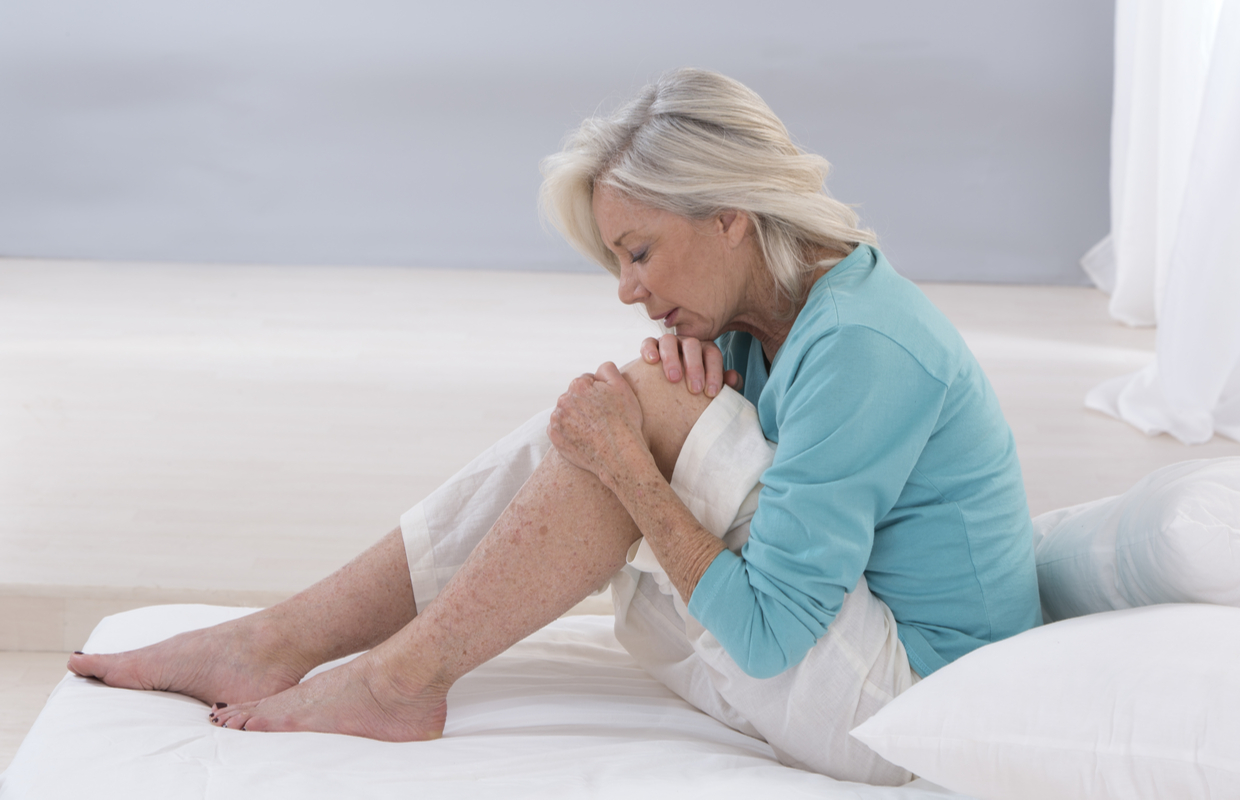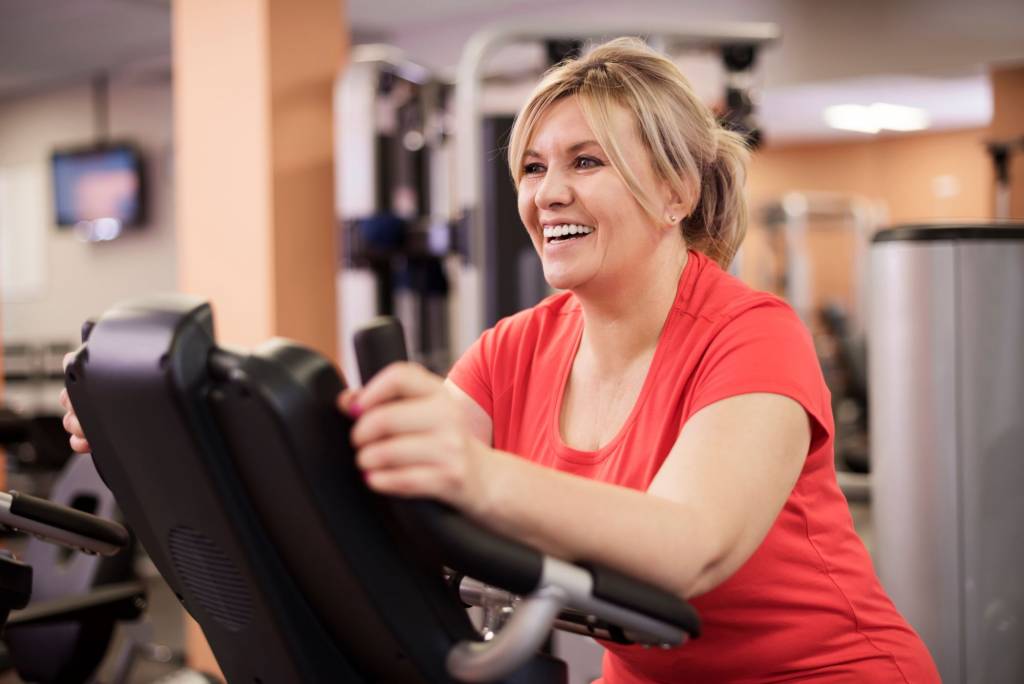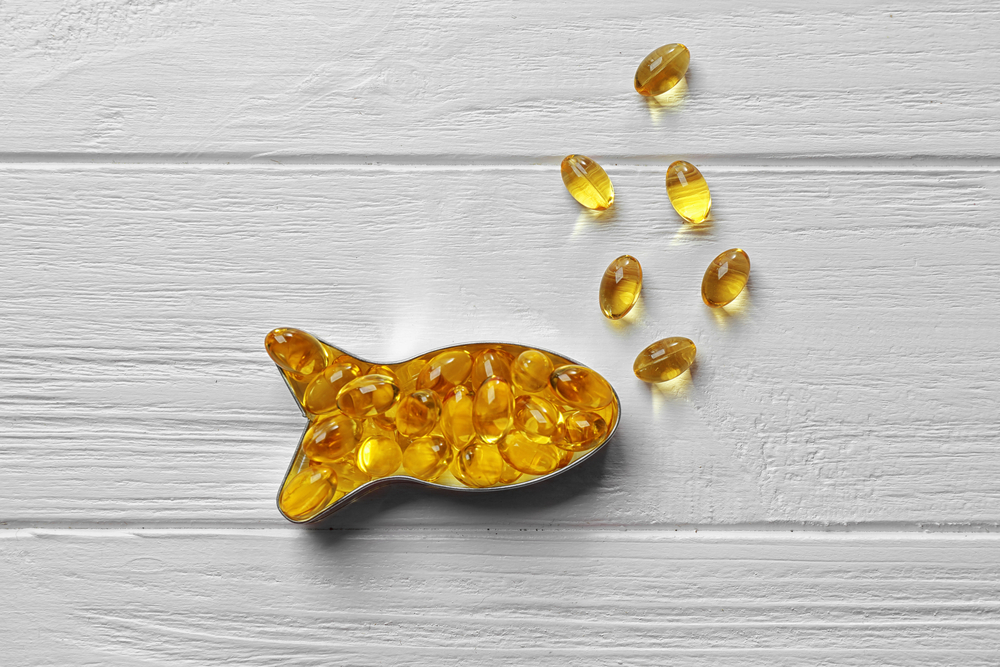Don’t want to rely on painkillers when treating joint pain? Dr Sarah Brewer has not one but nine ways to relieve osteoarthritis pain naturally…
Along with falling asleep on the sofa and forgetting what you went into a room to get, middle age is the time when most people notice their joints start to become creaky and aches and pains may set in.
This is as a result of osteoarthritis (OA) in which cartilage protecting the bone ends weakens and flakes away, triggering an inflammatory response, where the underlying bone swells and the joint space narrows.
Eventually, the bone ends may rub together, causing increasing pain, stiffness and deformity. Any joints can be affected, but it is most common in the larger, weight-bearing joints, such as the hips, knees and spine.

Osteoarthritis is where cartilage protecting the bone ends weakens and flakes away, triggering an inflammatory response.
Painful joints due to osteoarthritis are traditionally treated medically with oral painkillers, such as paracetamol or anti-inflammatory drugs. However, these are now used less frequently, following concerns they may affect your liver and kidneys, as well as increasing your long-term risk of heart attack or stroke.
But this doesn’t mean you need to put up with joint pain. There are a variety of natural approaches you can try…
Note: always seek medical advice if you have persistent joint pain. If you are taking medication, always talk to your doctor before starting a supplement and check for potential interactions.
How to relieve osteoarthritis and joint pain naturally
Exercise regularly for osteoarthritis relief
Daily exercise helps maintain a joint’s range of movement, even if this is limited. It also helps avoid muscle weakening and contractures. Exercise maintains a layer of synovial fluid over the surface of articular cartilage, known as weeping lubrication. This helps protect the cartilage.
Research shows that people with osteoarthritis who exercise regularly experience less stiffness and pain in their lower limbs than those who don’t.
In fact, exercises designed to strengthen the quadriceps muscles in the front of the thigh appear to be as effective in reducing symptoms of knee OA as non-steroidal anti-inflammatory drugs (NSAIDs).

Daily exercise helps maintain a joint’s range of movement.
Try a gel or cream – and rub it better!
As a child, you no doubt learned that “rubbing it better” really works for reducing the pain of knocks and sprains. Rubbing stimulates nerve endings and overwhelms the signals reaching the brain, so pain perception is reduced.
The physical action of massaging in treatment also warms the area, increasing blood flow so the active analgesic ingredients sink into the skin more readily.
Traditional pain-relieving creams and gels include substances such as oil of wintergreen, eucalyptus, capsicum or menthol, which have a warming or cooling effect. These provide a low-level, continuous stimulation of nerve endings. This means they become less sensitive and pass on fewer pain messages to the brain.
Modern versions contain glucosamine, which acts as a biological signal to suppress inflammation and switch on repair mechanisms. In four studies comparing glucosamine with NSAIDs, mostly ibuprofen, glucosamine was superior in two and equivalent in two.
Try Healthspan Optiflex Glucosamine (£11.95 for 160 tablets).
Lose excess weight for osteoarthritis relief
Carrying excess fat increases the force you subject on your joints. In fact, for every extra 450g of weight you carry, the overall force across your knees, when walking or standing, increases by 1.4kg. So, if you are 5kg overweight, the force on your knees increases by up to 14kg.
Overweight people who manage to lose as little as 5kg have been shown to halve their risk of developing knee osteoarthritis over the next 10 years. And studies show losing weight also reduces the level of inflammatory chemicals circulating in your body.

One study found that taking turmeric extracts was as effective as ibuprofen for reducing osteoarthritis pain.
Take turmeric to reduce joint inflammation
Turmeric is a traditional Ayurvedic medicine that reduces inflammation and joint pain. Its active ingredient, curcumin, blocks the production of TNF-alpha. This is an immune chemical associated with inflammation.
Research also suggests that turmeric protects cartilage-secreting cells from the damaging effects of inflammation. This helps to maintain the balance between synthesis and degradation of cartilage matrix.
A four-week study involving 367 people with knee osteoarthritis found that taking turmeric extracts (1,500 mg/day) was as effective as ibuprofen (1,200 mg/day) for reducing pain. Those taking ibuprofen were more likely to experience side effects of abdominal pain and discomfort, however.
Supplements that bind curcumin within tiny protective micelles help boost its absorption. So, look for supplements that offer quick absorption, such as those that use the Nova SOL curcumin, which is the most easily absorbed form of curcumin.
Find osteoarthritis relief with rosehip
Used therapeutically for thousands of years, the scarlet hips from the dog rose plant have anti-inflammatory and pain-relieving actions. Rosehip extract works in a similar way to aspirin by blocking a group of enzymes involved in triggering inflammation.
The level of pain relief shown in four clinical trials was equivalent to that achieved with NSAIDs, paracetamol and aspirin, but with fewer side effects. As a result, half of people involved in the studies said they were able to reduce their use of painkillers and anti-inflammatory drugs when taking rosehip supplements.
Get your vitamin D to reduce joint pain
Vitamin D appears to increase the thickness of joint cartilage and reduce the risk of osteoarthritis progression. Cartilage and underlying bone is sensitive to lack of vitamin D.
In fact, osteoarthritis can progress three to four times more rapidly when vitamin D deficiency is present. There is also an association between low vitamin D levels and increased risk of rheumatoid arthritis. (Plus, it’s good for your immune system).
Related: Vitamin D health benefits (plus vitamin D rich foods to try!)

Omega-3s have a pain-killing effect similar to that of NSAIDs, helping reduce joint pain and swelling.
Fill up on fish for osteoarthritis relief
The long-chain omega-3 fatty acids (DHA and EPA) in fish are beneficial alongside joint health supplements. Omega-3s have a pain-killing effect similar to that of NSAIDs, helping reduce joint pain and swelling.
While diet should come first, the National Diet and Nutrition Survey shows that average intakes of fish are consistently low, with UK adults eating an average of one third of a portion of fish per week. This is nowhere near the recommended two portions of fish per week, of which one should be oily.
Try Devil’s Claw for joint pain relief
Devil’s claw is a South African plant whose potato-like root tubers contain unique compounds that have an analgesic effect similar to that of NSAIDs.
Devil’s claw extracts significantly improve osteoarthritis pain and stiffness. Research shows it is effective for reducing pain in hand, wrist, elbow, shoulder, hip, knee and back joints.
A Scottish study also found that six out of 10 people taking devil’s claw were able to reduce or stop their usual pain medication. TRY IT: A.Vogel Devil’s Claw (£10.85).
Give CBD a go for osteoarthritis relief
Cannabidiol oil is emerging as a useful supplement for reducing painful joints. These beneficial effects result from inhibition of pain signalling pathways and an anti-inflammatory action.
CBD supplements may also help prevent the later development of pain and nerve damage in osteoarthritic joints. A study of CBD users found the top three therapeutic reasons for using it were chronic pain, arthritis/joint pain and anxiety.
Related: Could cannabis and medicinal mushrooms be a cure for breast cancer?
Dr Sarah Brewer is an author of numerous health books, including Overcoming Arthritis: The Complete Complementary Health Program (£9.99, Watkins), and is also a medical director at supplement and wellbeing brand Healthspan.








